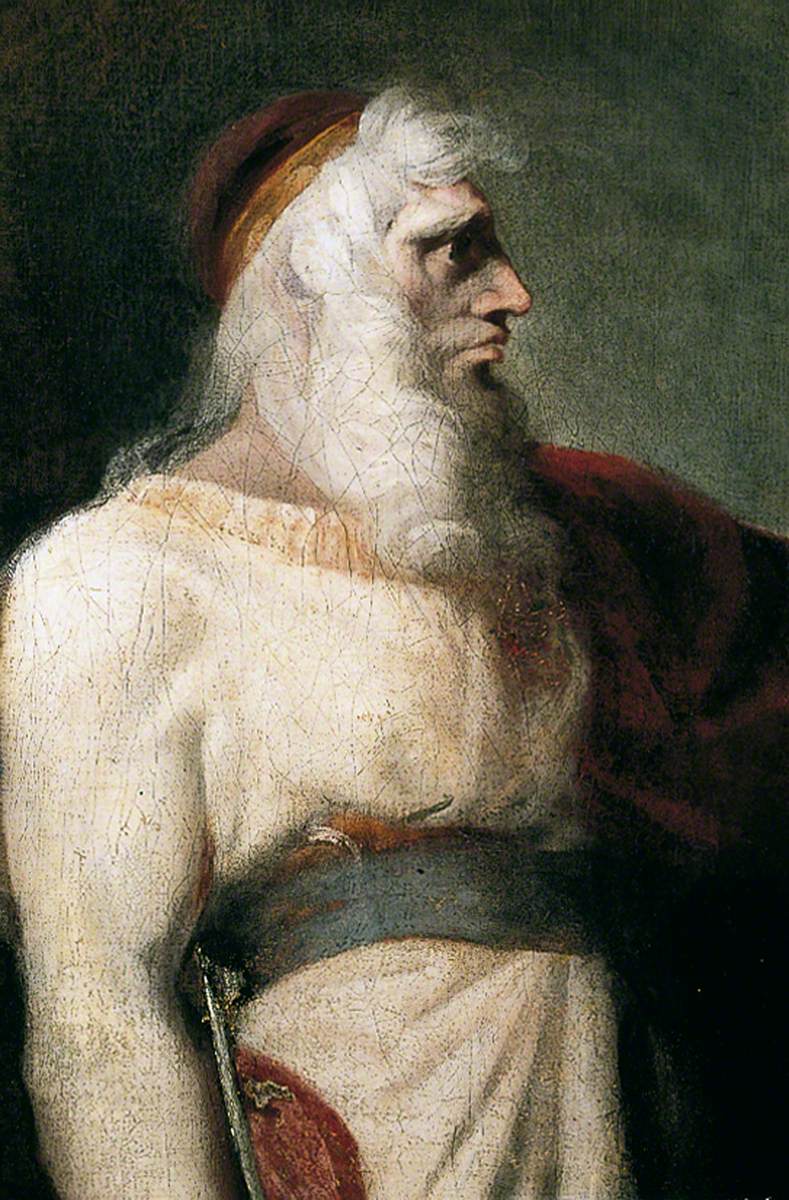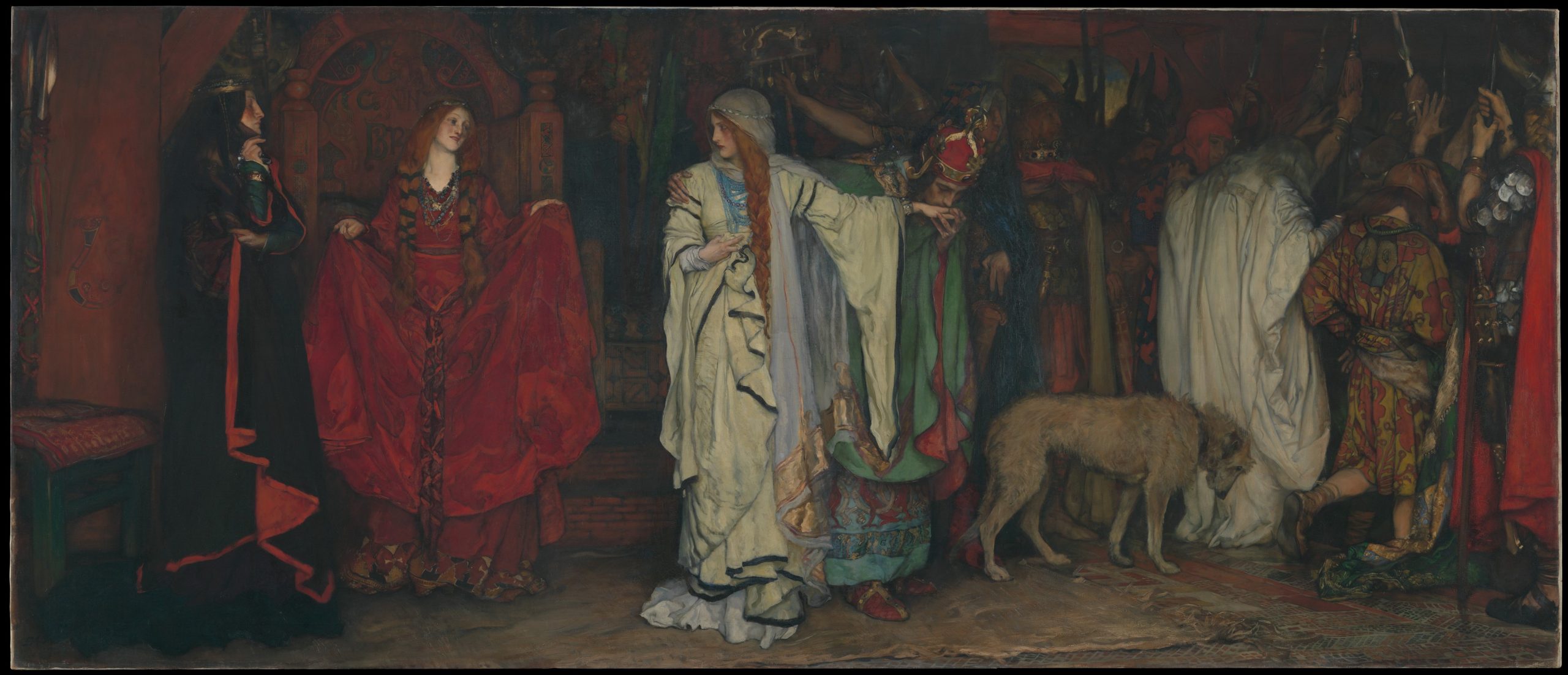10.7 Questions for Research and Inquiry

Questions for Further Inquiry
- Why teach Shakespeare today? How can the plays be connected to Psychology, Cultural Studies, History, World Issues, Philosophy, the Sciences, etc. Focus on a play you are most familiar with to write a short report analysis the “pros and cons” of teaching Shakespeare today.
- . Which Shakespeare plays are you most familiar with?
- Do you have any “favorite” Shakespeare plays? What features make these plays memorable and meaningful for you?
- How can you “remix” Shakespeare to help learners understand the “life lessons” for 2023 (spoken word poetry, song, technology, collage & mixed media, creative writing, etc.).
- Explore the way artists like Edwin Austin Abbey, Edmond Dulac, Gustave Dore, Henry Fuseli, Angelica Kaufman, William Hamilton, or Arthur Rackham created the innovative visual images for one of Shakespeare’s plays. Write an essay that synthesizes your findings.
- Create a visual collage of the major scenes in any Shakespeare play. Explore different artists’ representations of the setting, mood, characters, and plot. For more information about Shakespeare in art, please open the link here and here.
- Research one of the artists who illustrated a Shakespeare play. Based on your research, can you find out why the artist was motivated to paint the scene/character from Shakespeare?
- Which artist’s depiction of a Shakespeare play did you find compelling? Why?
- How might you create the stage and set design for a Shakespearean play using art/architecture from the 20th or 21st century? (See Designing Shakespeare from the Folger’s Shakespeare library for some idea
- The hip hop artist Akala has said that Akala states that hip hop and Shakespeare share a “unit in human culture, a unit in the ideas that humans pursue; and to inspire people toward their own form of artistic literary, cultural, and societal excellence” ” (Akala and Hip Hop Shakespeare) View one of Akala’s video and write down whether you agree with his perspective. (Shakespeare for Life) and Ted Talk with Akala.
- Identify and explain the types of art, song, and poetry you could use to make one of the plays by William Shakespeare more contemporary?
- Rewrite a scene from one of Shakespeare’s plays using spoken word poetry or hip hop.
All references to Shakespeare’s plays are found inThe Complete Works of William Shakespeare here.
Additional Resources
Bloom, H. (1998) Shakespeare : the invention of the human. Riverhead Books.
Hunt, D. (1980) (with foreword by Flora Robson). The flowers of Shakespeare. Webb & Bower.
Martineau, J. et al. (2003). Shakespeare in art. Merrell.
O’Brien, P., Roberts, J.A., Tolaydo, M, and Goodwin, N.(1994). Folger Shakespeare Library: Shakespeare set free: Teaching Hamlet and Henry IV (Part 1). Washington Square Press.
Odeon,K. The Shakespeare book: Big ideas simply explained (Teacher’s Guide). DK. Penguin Random House.
Rouse, R. L. (1978). The annotated Shakespeare. Clarkson N. Potter/Crown Publishers.
Selected Teaching Guides
Classroom Resources: Folger’s Shakespeare Library (Teaching Guides) (2023). https://www.folger.edu/classroom-resources
Folger Shakespeare Library: Works of Art, 2023, https://www.folger.edu/research/about-our-collections/works-of-art/
Folger Shakespeare Libary, Home Page, 2023, https://www.folger.edu/
Ten Books about Shakespeare that Every Teacher Should Read
Best Books about Shakespeare:
https://interestingliterature.com/2015/07/the-best-books-about-shakespeare/
National Council of Teachers of English (NCTE), 2023, Celebrating Shakespeare.
Royal Shakespeare Company (2023). Teaching Guides https://www.rsc.org.uk/learn/schools-and-teachers/teacher-resources
Stratford Teaching Resources (2023). https://www.stratfordfestival.ca/Learn/Teachers/TeachingResources/esources/
Art Illustrations for Shakespeare’s Plays (please click on the links below for more information about artists and their works).
Edwin Austen Abbey, Paintings/Scenes from Shakespeare’s Plays.
Arthur Rackham Illustrations for Midsummer Night’s Dream.
John Boydell Illustrated Shakespeare Collections
Boydell Shakespeare Gallery, https://en.wikipedia.org/wiki/Boydell_Shakespeare_Gallery
Daily Art Magazine. Shakespeare in Art.
Emory Education. Shakespeare Illustrated.
Eugène Delacroix. Hamlet Illustrations.
Edmund Dulac: Illustrations for The Tempest
Folger Shakespeare Library: The Graphic Gallery of Shakespeare Heroines.
Heath Robinson: Illustrations for Shakespeare’s A Midsummer Night’s Dream.
Henry Fuseli (Johann Heinrich Füssli). (Illustrations for Shakespeare’s Plays.
The Gothic Imagination of Heinrich Fűssli (Fuseli).
My Modern Met. Shakespeare Illustration Archive.
William Hamilton. Illustrator of Shakespeare Plays.
Nicholas Rowe: First edited Shakespeare Edition.

Note from the Metropolitan Museum of Art:
In this dramatic scene from King Lear, Cordelia—Shakespeare’s heroine in the tragedy—stands at the center of the composition, having just been renounced by her father in the play’s opening scene.” (Retrieved May 16, 2023 Metropolitan Museum of Art Website https://www.metmuseum.org/art/collection/search/10049)
Please click on the link here Edwin Austin Abbey for more information.
Rusu, R. (2023). Shakespeare’s plays in art. Daily Art Magazine.

